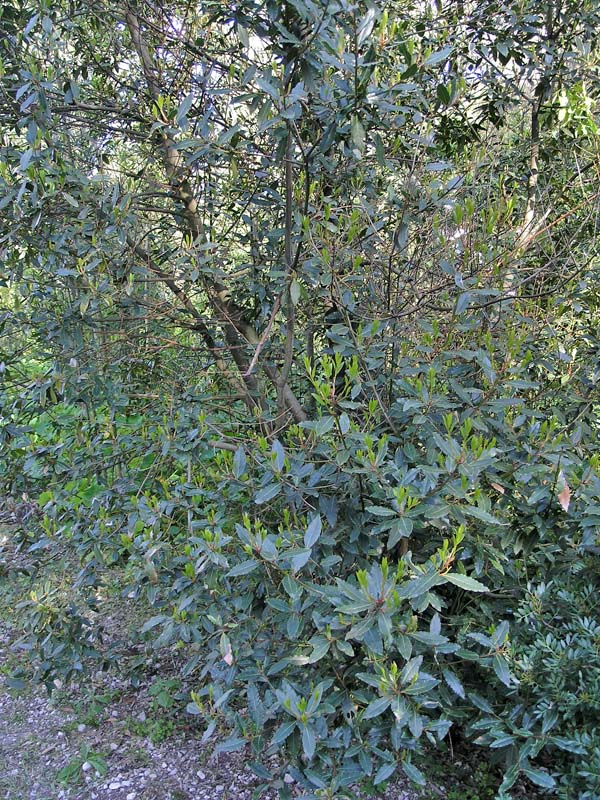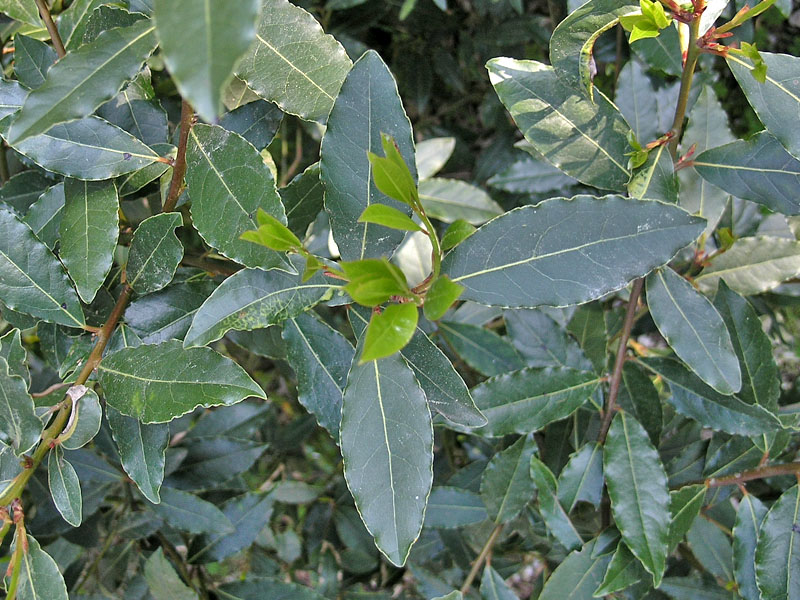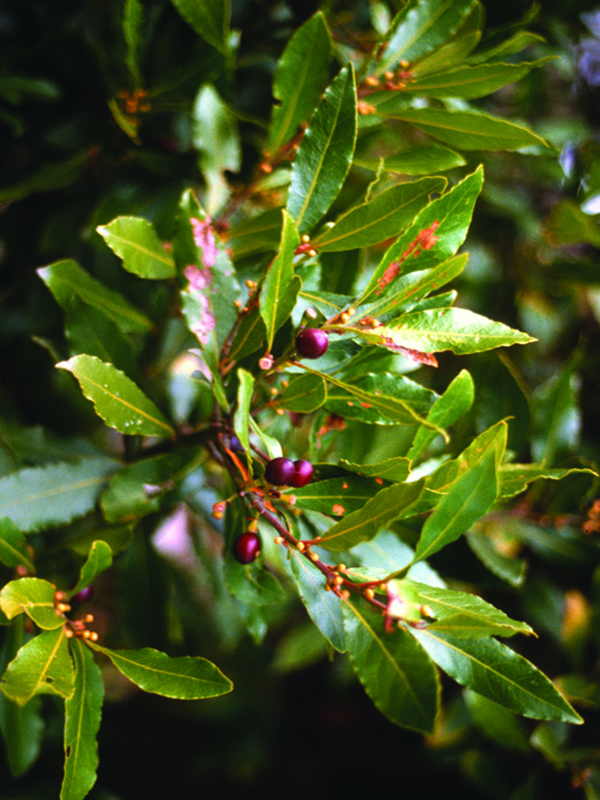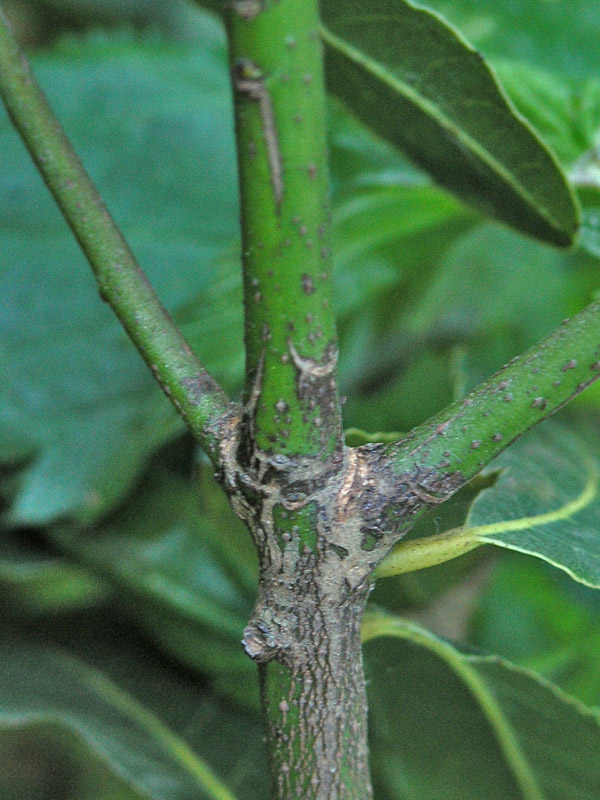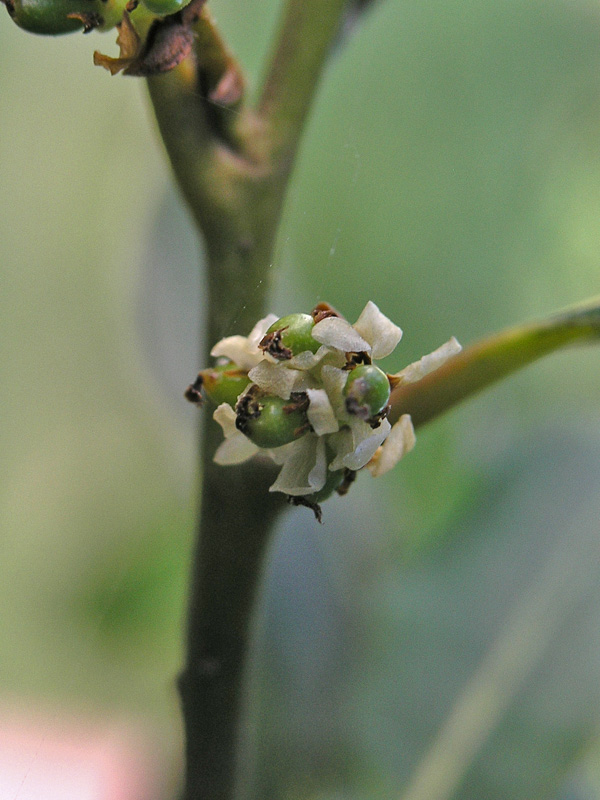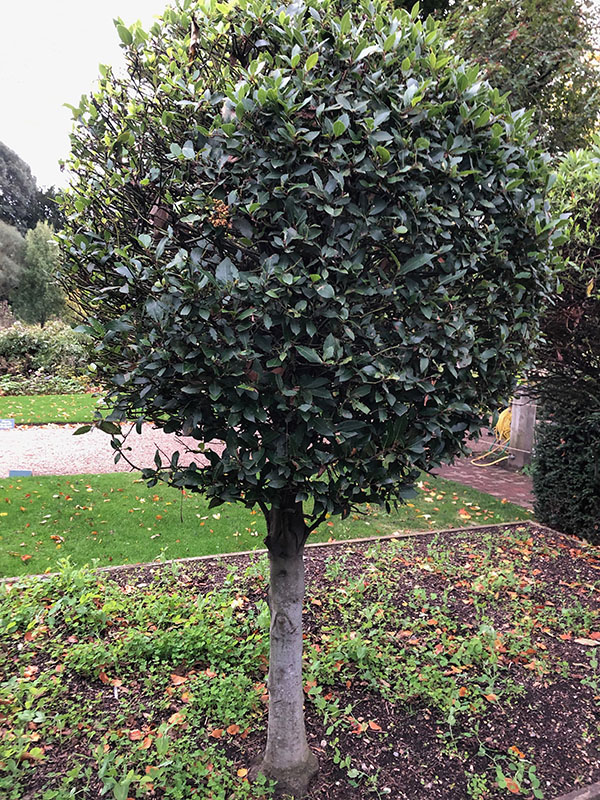
Woody > Laurus > Laurus nobilis > Laurus nobilis
Laurus nobilis
Bay Laurel
Origin: The Mediterranean region.
| Family |
| Lauraceae |
| Genus |
| Laurus |
| Species |
| nobilis |
| Category |
| Woody |
| Type |
| Shrub (evergreen) |
| Pronunciation |
| USDA Hardiness Zone |
| 8 |
| Canadian Hardiness Zone |
| 7b - 8a |
| RHS Hardiness Zone |
| H4 - H5 |
| Temperature (°C) |
| -12-(-7) |
| Temperature (°F) |
| 10 - 20 |
| Height |
| 3 - 18 m |
| Spread |
| 2 - 6 m |
Photographs
Description and Growing Information
Flowering Period
| General Description |
| Laurus nobilis or Bay Laurel is an aromatic, broadleaf evergreen tree or shrub used as an aromatic herb. |
| Landscape |
| A good winter interest or specimen plant for shady locations. Can be grown as a screen and makes a very good house plant. |
| Cultivation |
| Grow in full sun to part shade, in rich, moderately moist, well-drained soil. In less temperate climates, grow in containers that can be taken inside before the autumn frost for overwintering. Keep in a cool place with lots of light. Shape can be easily manipulated with pruning. Usually not grown taller than 2.5 m for garden use. |
| Shape |
| Pyramidal. |
| Growth |
| Medium |
| Pests |
| No serious pests or diseases of note. Occasional problems include: mealybugs, spider mites, powdery mildew and anthracnose. Scale can also be problematic, particularly on indoor plants. |
| Leaf Description |
| Fragrant, leathery, glossy, thick, broadly lanceolate, dark green, 5 - 10 cm long. |
| Flower Description |
| Insignificant, yellowish-green, dioecious (separate male and female trees). |
| Fruit Description |
| Purple-black berries with a single seed. |
| Notable Specimens |
| The A.M. Cuddy Gardens, Strathroy, Ontario, Canada. Chelsea Physic Garden, London, United Kingdom. |
| Ethnobotanical Uses (Disclaimer) |
| Leaves commonly used as an aromatic culinary herb. Used in ancient Greece to fashion crowns worn by athletic or martial victors. |
